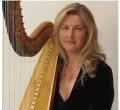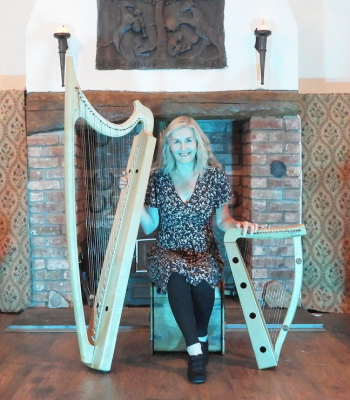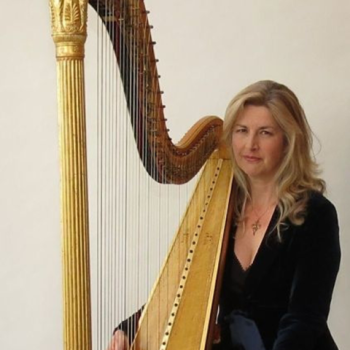
Review of the lecture, by Professor Robert Gurney
Sarah Deere-Jones gave a fascinating lecture in June to the Arts Society Henley. We think of the harp as an instrument particularly in Wales and Ireland, but it has a long history. Ancient harps, from Egypt and Greece, usually just had two pieces of wood at right angles, with strings between them, usually made from animal gut. The strings could not be pulled very tightly, so were very quiet. By the Middle Ages, harps were prevalent throughout Europe, with the triangular shape familiar from modern instruments. They were instruments of kings, and many illustrations exist of kings playing them in England and elsewhere. The modern form of larger harps probably were introduced to the British Isles by the Normans, though earlier instruments, now called celtic harps, certainly existed. The instruments continued to evolve, and the style of music and of playing. Sarah Deere-Jones illustrated these changes by playing two harps in a medieval style she brought with her. She also illustr ated the evolution of styles with illustrations showing carvings, stained glass, books and other evidence. Harps fell from English courtly favour at the time of Elizabeth I, as musical instruments evolved and so what was enjoyed also evolved. Other instruments were louder and could be played together more easily.
We were also graced at this lecture with the presence of Hilary Kay, who is the new President of the national Arts Society of which TASH is part, accompanied by her Antiques Roadshow colleague and TASH President John Benjamin. We hope Hilary's visit is the first of many.


